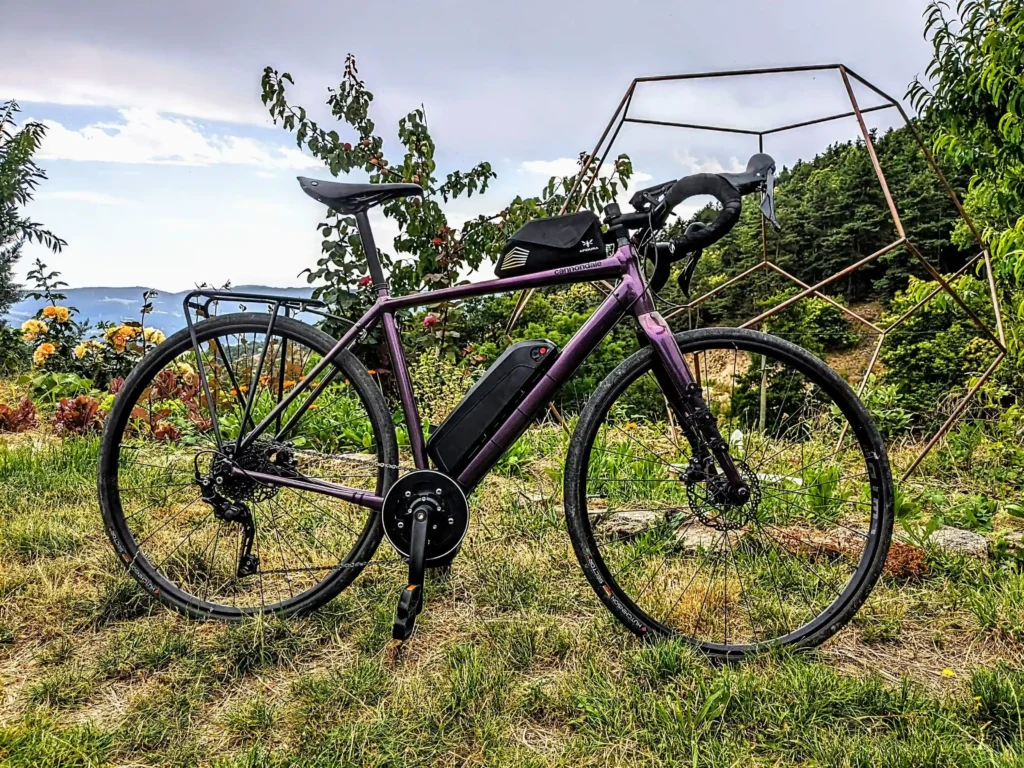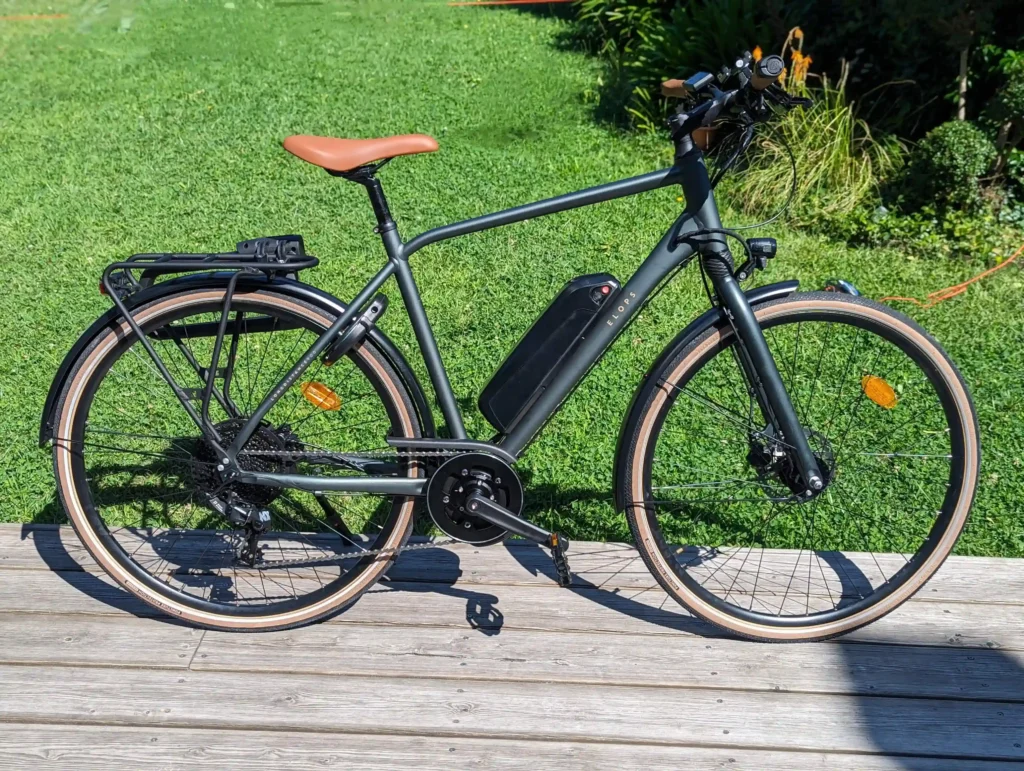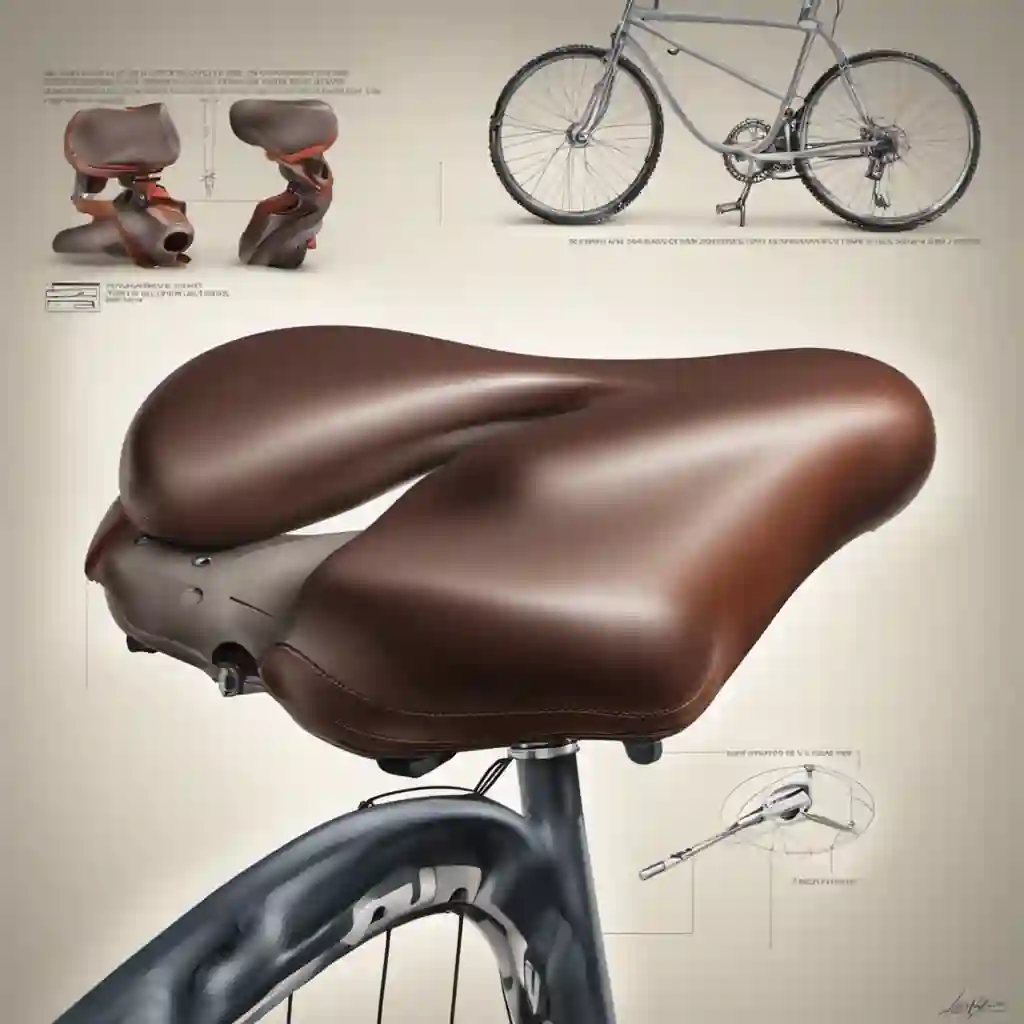Bicycle electrification: What’s the best choice between a wheel motor and a crankset motor? Detailed comparison.
Bicycle electrification has become an increasingly popular trend in recent years. Cyclists are looking to add electric assistance to their bikes without sacrificing ease of use and comfort. The two most common options for electrifying your bike are the wheel motor and the crankset motor. However, there are major differences between the two. In this article, we’ll review the pros and cons of both options to help you make the best choice for your electric bike. We’ll explore everything from top speed and battery life, to costs and overall benefits. So, are you ready to make your choices? Discover our detailed comparison to find out more about the ideal choice for your electric bike.

Motor power: what’s the difference between 250W and 500W, and what does the law say?
When it comes to electric bike motor power, the difference between a 250W motor and a 500W motor can seem significant. Indeed, a more powerful motor should be able to provide greater assistance for the cyclist. However, it is important to know that the use of these engines is governed by law.
In France, electric bicycles powered by a motor with a maximum output of 250W are considered “electrically-assisted bicycles” and can be used without specific registration or insurance. More powerful engines, such as 500W motors, are considered “mopeds” and require specific registration and insurance to be used on public roads. It’s important to note that these motorizations of 500W or more on bicycles are called “Speed bikes” and that they are very strictly regulated. Indeed, it’s not possible for a private individual to register his or her electrified bike as a “Speed bike” in France.
It’s therefore important to check local regulations before choosing the motor power for your electric bike. If you don’t need a lot of assistance and want to avoid the extra paperwork, a 250W motor might be the best option for you. At Syklo we offer a 250W bike electrification kit legal on public roads in France,
Motor wheel advantages and disadvantages :
Front and rear wheel motor advantages
Both front and rear wheel motors offer unique advantages in terms of performance and handling on an electric bike. The front-wheel motor is ideal for those looking for lighter-weight assistance and who want to retain the traditional feel of a bicycle. Its configuration sends power directly to the front wheel, providing excellent traction and improved stability on slippery surfaces. What’s more, the positioning of the motor at the front of the wheel reduces the risk of derailleurs or hubs coming loose, offering greater reliability.
On the other hand, the rear-wheel motor offers sportier performance and a more stable solution at high speeds. The configuration sends the assistance directly to the rear wheel, providing greater drag force when climbing hills and excellent braking power on steep descents. With power concentrated at the rear of the wheel, the weight of the assistance is ideally distributed for better handling and a smoother ride. Ultimately, the choice of front or rear wheel drive will depend on your personal preferences and driving style, so it’s important to consider all the advantages before making your choice.
Disadvantages of the front and rear wheel motor
There are a few disadvantages to using a front- or rear-wheel motor. First of all, these types of motors can make steering the bike more difficult, especially if you’re riding at high speed. In fact, the weight of the motor (and sometimes the battery) is concentrated at the front or rear of the bike, which can affect overall balance and handling when you’re turning. Wheel motors can also affect traction and stability, especially on slippery or wet surfaces.
Another disadvantage of the wheel motor is that installation can be more complex than with the pedal motor. Some wheel motors require a cadence sensor to be installed on the crankset, so two operations are required (wheel change + crankset), and the electronics must be correctly connected. This can be time-consuming, and requires a certain level of skill in terms of bike mechanics and electronics. What’s more, once installed, the wheel motor can be more difficult to maintain and repair than the crankset motor in the event of failure or malfunction.
In short, the choice between a wheel motor and a pedal motor will depend on your needs and preferences. If you’re looking for an electric bike that’s easy to use and maneuver, the pedal motor may be the best option. However, if you’re looking for a more powerful electric assist for longer or more challenging journeys, a wheel motor may be more suitable. So it’s important to weigh up the pros and cons before making your final choice.

Pedal motor advantages and disadvantages :
Advantages of the Bafang BBS or TSDZ2 pedal motor
The Bafang BBS or TSDZ2 pedal motors(see our other comaprative between these two pedal motors) offer many advantages over wheel motors for electrifying your bike. First of all, the pedal motor makes for a much more natural and comfortable ride, as the electric assistance is directly linked to your own pedaling. So you can easily adjust the power of the assistance to your own needs and riding preferences.
What’s more, pedal motors are generally more stable than wheel motors, making them much easier to drive. They’re also easier to install and maintain, as they don’t require major modifications to your bike or wheel. Finally, pedal motors are more energy-efficient, as they are more effective at transforming electrical energy into motion. As a result, they offer more torque for more efficient assistance, especially when climbing and under load.
In short, if you’re looking for an electric bike that’s comfortable, discreet, easy to use and offers excellent fuel efficiency, a Bafang or TSDZ2B-type pedal motor is an excellent choice to consider.
Disadvantages of the Bafang or TSDZ2 pedal motor
While pedal motors such as the Bafang BBS and TSDZ2 offer many advantages for electrifying bicycles, there are also a few drawbacks to consider. One of the main drawbacks is weight. Pedal motors are heavier than wheel motors, which can make the bike more difficult to maneuver and transport (however, our TSDZ2 motor weighs only 3.5 kg, so the choice of battery will have just as much bearing on this point). What’s more, when the motor is activated, it increases resistance and pedaling can become more difficult if the battery is low or the motor is incorrectly adjusted. On the other hand, the TSDZ2 (in its “b” version for those in the know) has a freewheel that completely frees the motor from pedaling when it is not aluminized.
Another disadvantage is cost. Pedal motors tend to be more expensive than wheel motors, as they are more complex to manufacture and require more components. On the other hand, pedal motors can be easier to maintain, as they have a simpler design to disassemble, making repairs easier to carry out.
Ultimately, the choice between wheel and pedal motors will depend on your personal needs and preferences. It’s important to weigh up the pros and cons of each option to find the best solution for your electric bike.

Detailed comparison of wheel and crankset motors:
The cost of the wheel motor vs. the cost of the crankset motor
When electrifying your bike, the choice between the wheel motor and the crankset motor is crucial, as it directly affects the cost of your entire project. In general, the wheel motor is less expensive than the pedal motor due to the more advanced technology and performance of a pedal motor.
On the other hand, the cost of installing and maintaining a pedal motor is generally lower, since it’s easier to install and doesn’t require wheel replacement. Pedal motors are often more robust and reliable than wheel motors, which also contributes to their popularity with cyclists. However, it’s important to note that the total cost of electrifying your bike is not limited to the cost of the motor alone. Other factors such as battery quality, accessories and installation costs can also influence the final cost of your project.
Wheel motor life vs. crankset motor life
In terms of lifespan, the pedal motor is generally considered more durable (20,000km lifespan) than the wheel motor. This is mainly due to the fact that the bottom bracket motor is better protected against external elements such as rain and mud, and is less prone to cracking and deformation due to the weight of the bike and the user. What’s more, the design of the pedal motor ensures a more even distribution of power, reducing the risk of overheating. However, the life of the crankset motor can be influenced by the wear and tear of the components that go with it, such as chains, sprockets and derailleurs.
On the other hand, the service life of the wheel motor depends very much on the quality of the wheel itself and the quality of the axle body material. If these components are of good quality, then the wheel motor can also be durable and reliable, especially for electric bikes used for short-distance commuting. However, if the quality of the wheel is inferior, or if the bike has to withstand heavier loads and higher demands, the wheel motor may suffer premature damage, necessitating costly and frequent repairs. Ultimately, the service life of both types of motor will depend on the quality of the components and how they are used.
Wheel motor power vs. crankset motor power
When considering electrifying your bike, it’s crucial to understand the similarities between the wheel motor and the crankset motor in terms of power. The wheel motor (sometimes containing the battery), while the crankset motor is installed near the crankset. In terms of power, the wheel motor is just as powerful as the crankset motor. Wheel and pedal motors generally range from 250W (legal) to 1000W (prohibited on public roads).
However, the power of the pedal motor may be more efficient than that of the wheel motor due to its placement. The pedal motor has better power transmission because it uses the traditional bicycle transmission system, allowing faster acceleration. What’s more, the crankset motor provides better weight distribution, making the bike more balanced and easier to handle. So it’s important to consider the pros and cons of each option before deciding which is best for your everyday use.
Ease of wheel motor installation vs. ease of crankset motor installation
The choice between installing a wheel motor or a pedal motor depends on several factors, including ease of installation. In general, the crankset motor is considered easier to install than the wheel motor, as it doesn’t require a double operation (wheel change, fixing the controller to the frame + installing the crankset sensor and sometimes the brake sensor). In the case of our electrification kit, all you have to do is replace the crankset with one with an integrated motor. Installation is quick and easy, with no need to dismantle the front/rear wheel, the brakes and attach the control unit to the frame in addition to the battery.
Overall, then, the ease of installation of the wheel motor is inferior to that of the crankset motor. This may be a factor to consider when making your choice if you’re looking for a quick and easy-to-install option for your electric bike. Note that you’ll need a number of specific tools to disassemble your cranks and crankset, as explained in our assembly tutorial.
Wheel motor energy consumption vs. crankset motor energy consumption
In the race to find the best motor to electrify their bikes, cyclists have two motor options: the wheel motor and the crankset motor. The choice of one or the other depends on the cyclist’s needs and preferences. As far as energy consumption is concerned, the wheel motor seems to consume the most energy, compared with the crankset motor.
The wheel motor requires more energy to operate than the pedal motor. Obtained in the form of batteries, the electrical energy required for assistance on an electric bike depends on the capacity of the bike’s battery. However, with the pedal motor, it’s the user who determines the amount of energy required, based on the effort required to pedal. This is not the case with the wheel motor, which requires more energy for the same effort provided by the pedal motor.
As a result, for the same distance to be covered on a daily basis, the wheel motor may be more expensive than the pedal motor, as it will require a larger battery. What’s more, for cyclists who want to reduce their energy consumption, the pedal motor is the best option. However, it should be noted that the choice between the two options depends on a number of factors, including bike use, terrain and personal preference.
Compatibility with different types of bikes
Compatibility with different types of bike is an important consideration when choosing the electrification option for your bike. The TSDZ2B 250W crankset motor is compatible with a wide variety of bikes, as it installs on the existing crankset and does not alter the geometry or structure of the bike frame. This means you can use it on a mountain bike, road bike or even a city bike without any difficulty.
On the other hand, the wheel motor may be more limited in terms of compatibility, as it requires a certain type of frame. It may be more difficult to install on a road bike or city bike with a narrow frame, but it can be a viable option for mountain bikes and fat bikes. That said, it’s important to check the installation instructions to make sure the wheel motor is suitable for your type of bike. Please also note that wheel motors are not adaptable to all types of wheel mounting (front and rear axles), all cassette sizes (limited number of gears) and all brake types (drum brake, disc brake).
Ultimately, the choice between a crankset motor and a wheel motor will depend on your personal preferences and the characteristics of your bike. If you’re looking for a versatile, easy-to-install solution, the pedal motor may be the best choice.
Driving differences between wheel and pedal motors
Wheel and crankset motors offer totally different riding experiences. With the wheel motor, assistance is concentrated on the wheels and you are towed or pushed. The pedal motor, on the other hand, is much more natural. The electric assistance of our motor, for example, will depend on the pressure exerted on the pedals. This means you’ll have to pedal for assistance.
Motor and electrified bike maintenance
In terms of maintainability, the wheel motor is generally easier to service because it doesn’t involve chain, sprocket or derailleur wear. The crankset motor, on the other hand, requires more regular maintenance due to its greater interaction with the chain and sprockets.
In the event of a problem with the wheel motor, it’s often easier to send the whole wheel to a repairer than to deal directly with the motor itself. Ultimately, the best choice for you will depend on your personal needs and preferences.

Customization options for different engines :
Customization options for the TSDZ2B pedal motor with open source firmware
The TSDZ2B crankset motor is a popular choice for electrifying your bike, offering highly efficient electric assistance. One of the advantages of this engine is the ability to customize parameters via open source firmware. This means you can modify maximum speed, power, assistance level, pedaling sensor sensitivity and much more.
Using a computer and USB cable, you can access firmware files and modify them according to your preferences. There’s also a large online community that shares custom configurations for the TSDZ2B, making the customization process easy.
Customization of the TSDZ2B pedal motor allows you to adapt electric assistance to your needs and riding style. This can also extend battery life by reducing power or adjusting assistance according to driving conditions.
With our electrification kit, Syklo takes care of setting the firmware for you, and gives you access to detailed instructions for customizing your motor. Please note that you will need to select the EXPERT screen on the configurator to modify the motor easily.
Wheel motor customization options
The wheel motor does not currently offer any particular firmware customization. On the other hand, it will be possible to customize the quality of components around the engine, such as rims, spokes, …
Why did Syklo choose the TSDZ2b 250W pedal motor?
At Syklo, we chose the TSDZ2b 250W pedal motor for several reasons. First of all, this motor is equipped with a torque sensor, which makes electric assistance more natural and intuitive than with the Bafang BBS. Unlike a speed sensor, which increases electric assistance as a function of bike speed, a torque sensor measures the rider’s pedaling force and adapts electric assistance accordingly. This makes for a smoother, more enjoyable driving experience.
What’s more, the TSDZ2b 250W pedal motor is perfectly legal in France, as it respects the authorized power limit for electric bikes. French law imposes a maximum power rating of 250W for electric bicycles, to guarantee the safety of road users. With this engine, you’re sure to be riding legally.
Last but not least, the customizable firmware of the TSDZ2b 250W pedal motor allows great flexibility. You can adjust several parameters to adapt the electric assistance to your needs and riding style. For example, you can set the sensitivity of the torque sensor, the maximum speed or the power assistance force provided. This customization allows you to benefit from a tailor-made electric assistance, perfectly adapted to your daily use.




